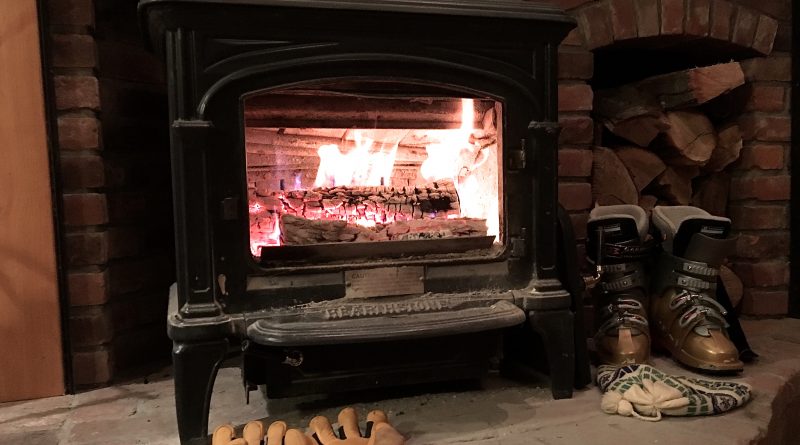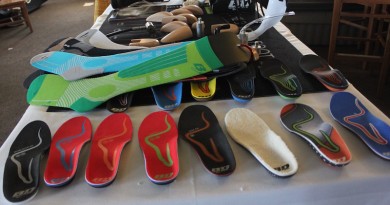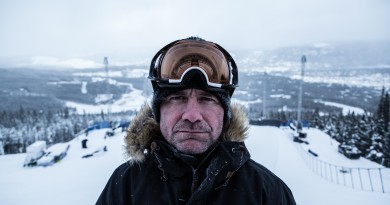Fire and Ice: On Warming The Soul
The old fellow who sold me my house in northern Vermont a quarter-century ago was eager to introduce me to the wood stove he was passing on to me. It was a brawny oval thing that sat on a brick hearth in the living room with no frills or ornaments to dress it up. Its deep sooty color spoke of years of faithful service.
“Kept us warm through 15 winters,” Vern asserted proudly. “She ain’t pretty, but she burns hotter ‘n hell.”
He moved aside the lid, fed in some newspaper and small sticks, and gradually added bigger and bigger logs. Within minutes, the room resonated with the crackle and pop of burning timber. A warm woody scent percolated throughout the house. Vern carefully adjusted the dials and vents to feed air to the fire. His nubby fingers seemed to caress the old workhorse as he fine-tuned the flame. “Each stove has its own personality. Ya gotta get to know how she breathes,” said Vern affectionately.
To heat with wood is to become intimate with it. First there is the wood itself: it must be cut, split and stacked. Some of my neighbors venture into the woods to cut their own timber and then haul it out. Most of us let the loggers do that part. The best firewood is hardwood, such as maple, ash and oak. These burn hot and slow.
Stacking wood is a time-honored art. A well-built wood pile has sturdy cross-hatched ends for support, is oriented to get plenty of sun and air, yet protects the wood from moisture. Wood burns best when it has been split and dried for at least a year.
The effort that goes into heating with wood is well rewarded. Wood, say the old timers, heats you four times: when you stack it, when you split it, when you haul it inside, and finally when you burn it.
The first winter after we moved into our house, my wife and I would do relays out to the wood pile, ferrying wheelbarrow loads into the wood box next to the stove.
I fell into a rhythm of splitting kindling on a stump, the cool fall air punctuated by the steady thunk of my axe. We adapted our routine to the change of seasons: the wheelbarrow was soon replaced by plastic sleds, and finally we had to don snowshoes to reach our wood pile. In recent years, I built a woodshed to keep the wood dry.
Our wood stove is the heart of our home. Each November, we rearrange our furniture and pull a couch directly in front of the stove. This will be our perch where we start and end each winter day. Visitors to our home instinctively migrate to the warm hearth like weary hunters drawn to a campfire, the deep wood heat relaxing and even sedating us all.
The wood stove is part of my ski ritual. Even on a powder day when I am focused on charging out the door, I begin by feeding the hungry stove. That ensures that the house will be warm on my return, and that others will wake up to civilized temperatures. After a strenuous day of skiing, I head home and stoke the stove again. I haul in new wood while I’m dressed to be outside. The work of heating with wood is an endless cycle, repeated with a comforting regularity.
As the coals burn, slowly, the sensation of battling gusty summit winds subsides and the sharp bite of single-digit temps on my cheeks recedes. The rhythmic movement of a long backcountry climb exits my weary muscles. And the exquisite feeling of dropping into a steep face becomes a pleasant blur.
The piercing warmth of burning wood is how every ski tour ends. I lay my wet clothes and boots to dry and sit down in a chair to watch the dancing flames for a few moments. I wake up hours later.
Perhaps that is what is most alluring about wood stoves, something primitive man learned long ago: Fire warms more than the body. It warms the soul. n
David Goodman is the author of the classic, Backcountry Skiing in the Northeast and numerous other books. He lives in Waterbury, Vt. with his wife Sue Minter and son Jasper and heats his house with wood.





Brings back good memories David. Like when we’d come back to a 50-degree house after a 10-11 hour workday and find but a few bits of coal remaining. Took two hours to heat the abode back up and ruined some good office clothes in the process. BTW, your Backcountry book is one of my ski encyclopedias. Did the Bruce a few years ago (I’m a slacker) and fell in love with it.